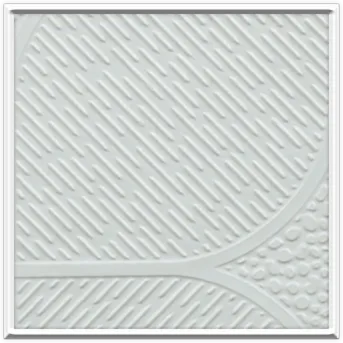9 月 . 02, 2024 16:50 Back to list
Soffit Access Panels - Easy Access for Maintenance and Repairs
Understanding Soffit Access Panels Importance and Installation
Soffit access panels are essential components in modern construction, serving both functional and aesthetic purposes. These panels provide convenient access to critical infrastructure hidden within walls or ceilings, such as plumbing, electrical wiring, and HVAC systems. With the growing emphasis on efficient designs, the role of soffit access panels is becoming increasingly pivotal.
What Are Soffit Access Panels?
Soffit access panels are removable or hinged covers that allow entry to concealed areas in residential and commercial buildings. They are typically installed in the soffit area, which is the underside of a roof overhang or eave, making them less noticeable while providing necessary access points. These panels come in various sizes and materials, including metal, plastic, and gypsum, allowing for flexibility in design and functionality.
The Importance of Soffit Access Panels
One of the primary reasons for incorporating soffit access panels into a building's design is maintenance. They facilitate easy access to vital systems for inspections, repairs, or upgrades without the need for disruptive demolition or extensive remodeling. This access helps in ensuring that systems remain functional and safe, contributing to the overall longevity and safety of the property.
Moreover, these panels enhance the aesthetic appeal of a building. By providing a clean and finished look, soffit access panels obscure unsightly penetrations or junctions, maintaining the visual integrity of a ceiling or wall. This is especially important in commercial spaces, where appearance can significantly impact client impressions and the overall ambiance.
Installation of Soffit Access Panels
soffit access panel

Installing soffit access panels is a straightforward process, but it must be done with precision to ensure proper function and fit. Here are some fundamental steps involved in the installation
1. Choosing the Right Location Before installation, it’s crucial to identify the areas that need access to infrastructure. Commonly accessed areas include plumbing stacks, electrical junction boxes, or HVAC duct systems.
2. Selecting the Panel Depending on the location and requirements, choose a panel that meets both aesthetic and functional standards. Consider factors like the material, size, and whether a hinged or removable panel is necessary.
3. Cutting the Opening Using a drywall saw or a reciprocating saw, carefully cut the opening in the soffit or wall where the panel will be installed. Accurate measurements are essential to ensure a snug fit.
4. Securing the Panel Once the opening is created, fit the access panel into place. If it’s a hinged panel, ensure that it swings open smoothly and is securely fastened. For removable panels, use clips or screws to keep it in place while allowing ease of access.
5. Finishing Touches After installation, finish the edges as required. This may include painting or caulking to create a seamless look with the surrounding surface, enhancing the overall appearance.
Conclusion
In conclusion, soffit access panels play a crucial role in contemporary building design. They not only provide essential access to hidden systems, ensuring ease of maintenance, but also enhance the aesthetic appeal of a space. Proper installation and thoughtful placement of these panels can significantly impact the functionality and appearance of a building. As the demand for efficient and stylish designs continues to grow, the importance of soffit access panels cannot be overlooked.
-
Revolutionizing Interior Design with Ceilings t grid Suspended SystemNewsOct.29,2024
-
Revolutionizing Ceiling Design with ceiling access panel with Gypsum Tile WaterproofNewsOct.29,2024
-
Revolutionizing Interior Design with PVC Gypsum Ceiling: A Comprehensive GuideNewsOct.29,2024
-
Elevating Interior Design with High quality Mineral Fiber Ceiling TilesNewsOct.29,2024
-
Revolutionizing Interior Design with PVC Gypsum Ceiling: A Comprehensive GuideNewsOct.29,2024
-
Elevating Interior Design with High-Quality Mineral Fiber Ceiling Tiles: A Comprehensive GuideNewsOct.29,2024







